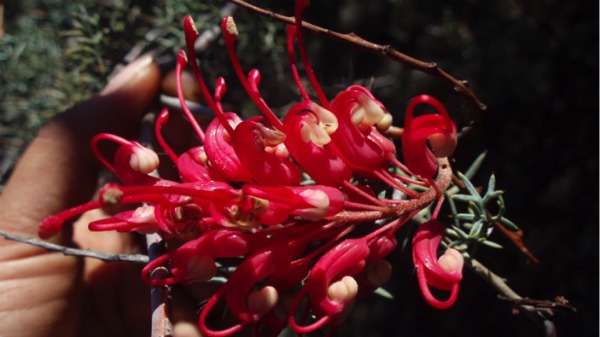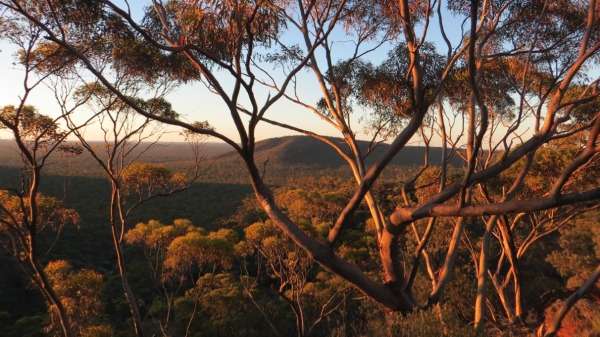'Island' grevillea drifts through time

Genetic testing of the bird-pollinated Grevillea georgeana (Proteaceae) on 'terrestrial islands' in WA has found most are so isolated that their evolution has become driven by genetic drift.
Genetic drift sees infrequently occurring alleles lost over time, which causes populations to lose genetic diversity and become highly distinctive.
This suggests more needs to be done to protect endemic species on these terrestrial islands, in particular the Helena Aurora Range in the Goldfields, where conservationists are pushing for Class-A Reserve status to limit mining activity.
The University of Western Australia study also took samples at Die Hardy, Mt Manning, Hunt, Taipan Hill, Mt Correll and Mt Finnerty.
To determine population differentiation, researchers extracted DNA from samples, sequenced three non-coding plastid DNA regions and genotyped 10 highly variable regions of the nuclear genome.
"Genetic differentiation between populations was high, which suggests seed and pollen dispersal among these banded iron formations is limited," Dr Heidi Nistelberger says.
"[This suggests] that long-term isolation of these populations has allowed for the independent processes of mutation and genetic drift to shape genetic variation.
"In terms of seed movement, our data shows populations of G. georgeana diverged and became isolated in the Pleistocene [2.5 million to 11,000 years ago], a period of dramatic climate fluctuation in this landscape.

"Some of the populations may have diverged as long as 1.6 million years ago."
The exception to this almost complete divergence was three populations at Mt Finnerty, Taipan Hill and Hunt Range which shared haplotypes—sets of DNA variations inherited together.
This indicates some connectivity could exist between these sites, which lie within the Yendilberin/Watt Hills greenstone belt.
The researchers say parts of the area were inaccessible while they were collecting samples.
Pollen dispersal could also offer a small genetic bridge between populations.
However, while researchers found pollen contributed twice as much to gene flow compared to seeds, flow between neighbouring populations was not frequent enough to override the forces of genetic drift in terms of evolution.
"Pollen flow shows at least some level of connectivity in this landscape, a process that is likely to be important for the maintenance of genetic diversity," Dr Nistelberger says.
While the most isolated site, Mt Correll, had the greatest average genetic divergence from all other populations, even closely located populations showed high degrees of variation.
As part of her PhD, Dr Nistelberger also looked at the genetic diversity of Banksia arborea and the millipede Atelomastix bamfordi at these sites.
More information: "Genetic drift drives evolution in the bird-pollinated, terrestrial island endemic Grevillea georgeana (Proteaceae)." Botanical Journal of the Linnean Society, 178: 155–168. doi: 10.1111/boj.12270
Journal information: Botanical Journal of the Linnean Society
Provided by Science Network WA
















